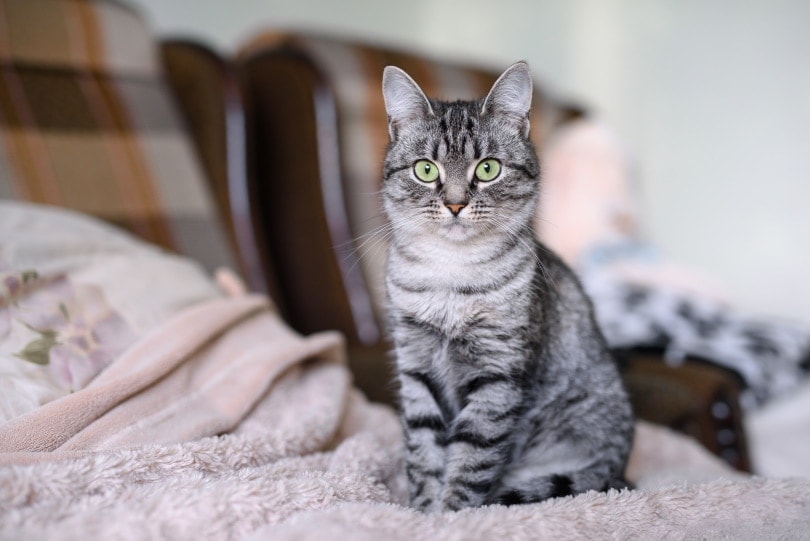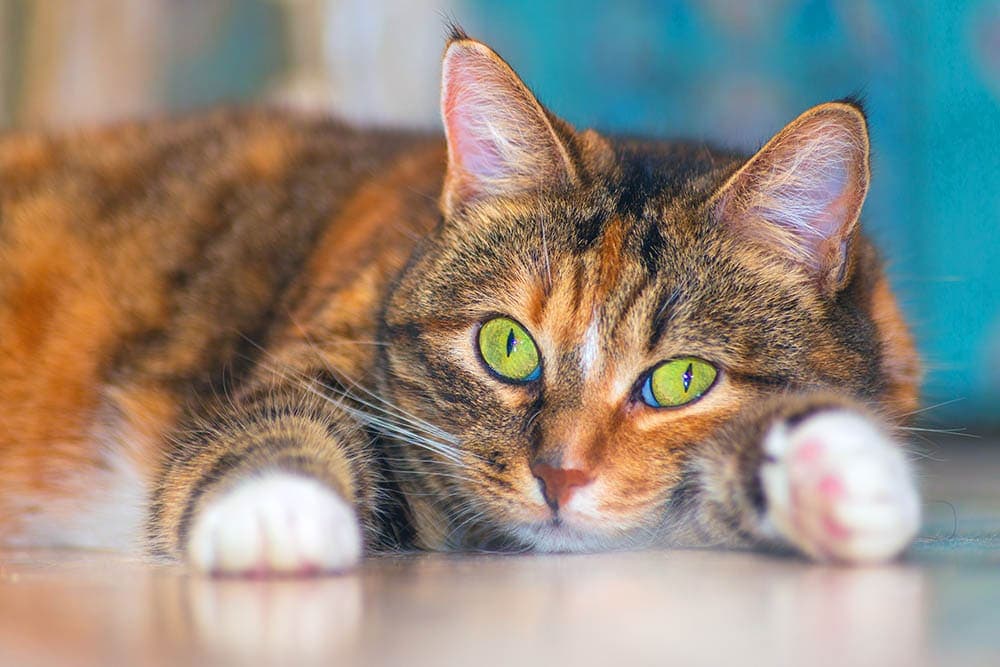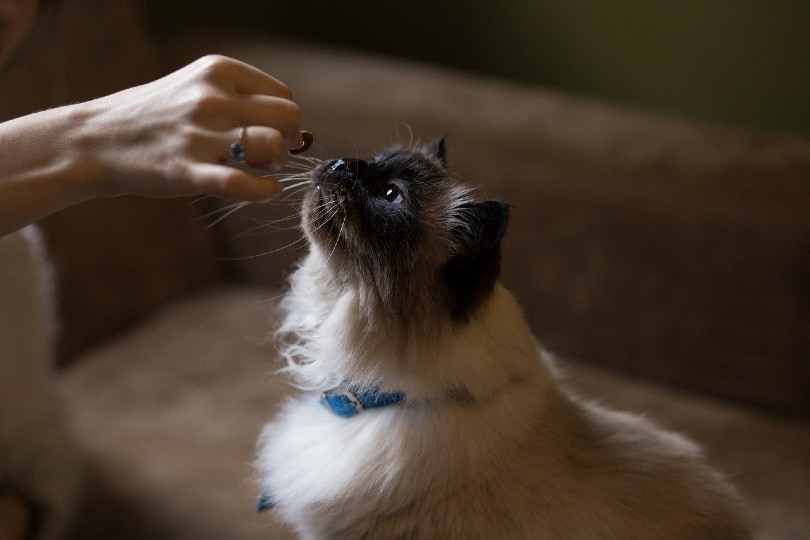6 Common American Shorthair Cat Health Problems

Updated on

The American Shorthair is a common short-haired tabby cat that comes in a variety of coat patterns and colors, including silver and orange. These medium-sized cats are known for their good nature and get along well with children and other pets.
Like other cat breeds, the American Shorthair is prone to health problems, and it’s important to know what to expect if you’re planning to bring one home. Here are the six most common American Shorthair cat health problems.
The 6 Common American Shorthair Cat Health Problems:
1. Heart Disease
Heart disease is a major problem for humans, cats, and other animals. Cats may have heart disease from inherited conditions or through diseases that cause damage to the heart, such as diabetes.
Cats can have various heart conditions, but the most common are hypertrophic cardiomyopathy, a thickening of the heart muscle caused by an overactive thyroid (among other causes), and dilated cardiomyopathy, which is caused by a deficiency of the amino acid taurine.
Several symptoms can indicate heart disease, including labored breathing, poor appetite, lethargy, collapse, and sudden paralysis. It’s important to have your cat tested by a vet to definitively diagnose heart disease.

2. Feline Lower Urinary Tract Disease
Urinary tract diseases are common in cats and can arise from many different causes. In some cases, urinary tract diseases may arise from overweight cats, eating a dry diet, and emotional or environmental stress.
Cats with this condition may show signs of difficulty or pain during urination, frequent urination, and bloody urine. They may also eliminate outside the litterbox on cool surfaces, such as a tile floor or bathtub. They may lick themselves excessively as well.
It’s important to have your cat tested for signs of diabetes, kidney disease, urinary infection, and other urinary problems at your regular vet visits.
3. Renal Failure
American Shorthairs can suffer from renal failure, which is when the kidneys can no longer filter waste from the blood and shut down. Though this is common in older cats, it can happen to younger cats.
Cats can have acute or chronic kidney failure. Acute kidney failure is sudden and may be caused by poisonings, such as toxic plants or antifreeze, trauma, shock, or infection. Chronic kidney failure isn’t as obvious and may not have a clear cause, though it can be brought on by dental disease, recurrent kidney infections and blockages, thyroid problems, or heart disease.
Some of the symptoms of kidney failure include frequent urination, excessive thirst, weight loss, low appetite, bloody or cloudy urine, diarrhea, and vomiting. Cats may also show signs like constipation, a brownish-colored tongue, apathy, weakness, bad breath, and a dry coat. It’s important to have your cat tested and evaluated by your vet to catch early signs of kidney problems.
4. Hyperthyroidism
Older cats may develop hyperthyroidism or a tumor in the thyroid gland. This gland is responsible for controlling the metabolic rate and many other functions in the body. When it’s overactive, it can cause a cat’s body to run in “overdrive,” often leading to complications like hypertension, heart disease, and associated problems.
Cats with hyperthyroidism will often have an increased appetite, excessive thirst and urination, vomiting, diarrhea, poor coat condition, and hyperactivity. This disease develops slowly, so it may be advanced before the signs are noticed. It’s important to have your cat’s blood regularly tested to spot problems early on.
5. Polycystic Kidney Disease
Polycystic kidney disease is a genetic condition in American Shorthair cats that involves cysts that develop within the kidneys and liver. Over time, these cysts enlarge and destroy the organ, though the time this takes can vary between individuals.
There’s no cure for polycystic kidney disease, but it can be managed with diet and medication. Cats with this disease often have weight loss, excessive thirst, vomiting, and other signs of poor overall health. Blood or urine testing can detect early problems in organ function, but you can also test your cat for the genetic markers of polycystic kidney disease.
6. Diabetes Mellitus
Diabetes mellitus is a disease of the pancreas, which is necessary for digestion and blood sugar regulation. This is typically genetic and may occur in any cat breed, though it may also be caused by poor lifestyles, such as low-quality diets and obesity.
The early symptoms of diabetes mellitus include weight loss, increased appetite, and increased urination, which may be difficult to spot early on. Vets can test cats for diabetes mellitus by monitoring the level of glucose (blood sugar) in the blood or urine. The kidneys conserve glucose, however, so it may not be present in the urine until excessive levels are reached. Fortunately, diabetes mellitus is treatable, though it is a chronic condition.
Final Thoughts
Like all cats, American Shorthairs are prone to several health conditions. Most of these conditions are manageable or preventable with good lifestyle choices and regular veterinary care, so they shouldn’t prevent you from having a long and happy life with your American Shorthair cat.
Featured Image Credit: Lalandrew, Shutterstock










